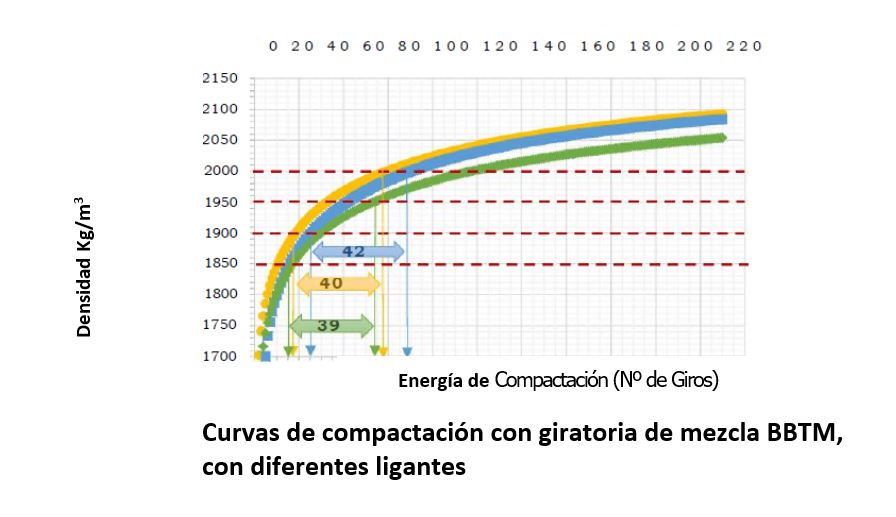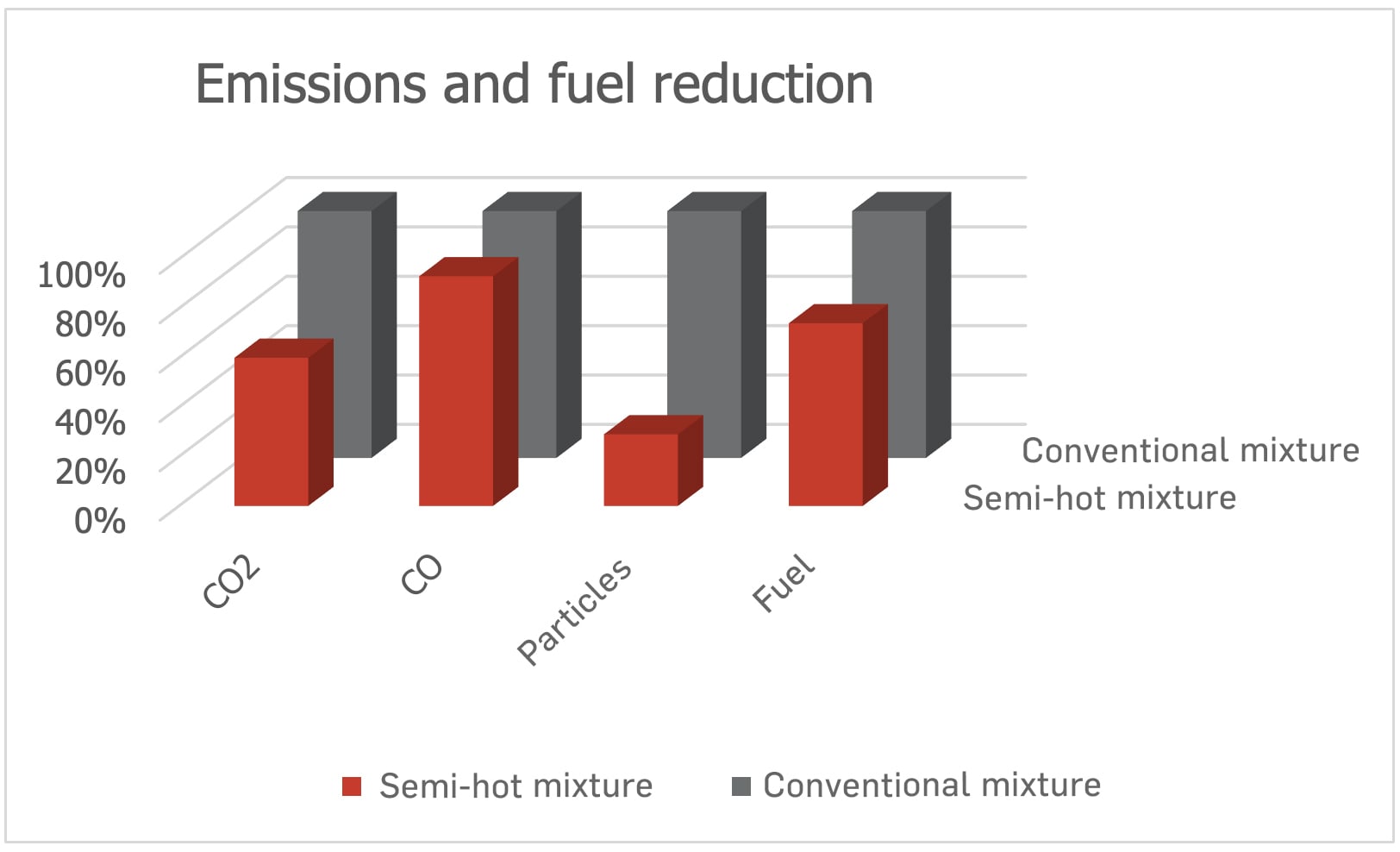The design criteria for semi-hot mixtures are similar to those of their hot counterparts, although, due to the lower compacting temperatures, special attention should be paid to aspects such as:
- Void content and density
- Sensitivity to water
- Resistance to plastic deformation
- Stiffness modulus
Due to the compacting method used in the laboratory, it is possible that the densities obtained with BT binders are lower than those of their equivalents for hot mixtures. In our experience, this is not a problem on site, since compacting is much more energetic.
To facilitate handling and wrapping, these binders are used at a temperature similar to that used for conventional binders. Therefore, when manufacturing the mixture, the reduced aggregate heating temperature is what results in the lower final temperature of the mixture. In the case of binders made with waxes, the handling and wrapping temperature can be reduced due to their lower viscosity.
In any case, at laboratory scale, it is advisable to keep the manufactured mixture in the oven for the time necessary to ensure that compacting is carried out at the desired temperature.
For a more detailed analysis of the work formula, it may be advisable to carry out a compactability study of the mixture in a gyratory compactor, and to analyze the workability of the mixture.

It should be taken into account that the type of compacting, at laboratory scale, and reduced ageing of the binder due to the lower manufacturing temperature of the mixture have an effect on the result of some tests, such as the track test (UNE-EN 12697). The results are relatively often lower than those obtained with similar hot mixtures, although, according to our experience, this has never led to plastic deformation on site, due to the higher compacting energy applied. In addition, semi-hot mixtures have the advantage of greater durability due to the lower degree of ageing of the binder.
In any case, it should be remembered that low-temperature mixtures require a specific design, meaning that adjustments in binder content and grain size may be necessary and beneficial with respect to conventional reference mixtures to ensure the best possible performance.





